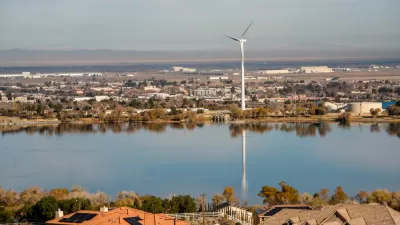The rent eats first, they say. But how do people survive when the rent also eats almost everything?

Researchers at the University of Southern California Price Center for Social Innovation recently published the results of a massive survey of Los Angeles-area renters to gather data on the effects of the region's housing affordability crisis.
The "How do Renters Cope with Unaffordability?" report was led by Jovanna Rosen, Sean Angst, Soledad De Gregorio, and Gary Painter, who spent 2019 conducting surveys in Spanish and English in the Los Angeles Promise Zone (LAPZ), Central Los Angeles, and the South Los Angeles Promise Zone (SLATE-Z).
Key findings from the report include data showing many households cutting back on basic household needs to account for rent burdens.
"A majority of households have cut back their consumption of basic needs over the past two years in order to afford rent, including food, clothing, and entertainment and family activities. Many have acquired more debt as well," according to the report.
"Over 60 percent of surveyed households reduced food consumption and approximately 45 percent reduced spending on clothing and/or entertainment and family activities. About 45 percent of households reported delaying bill payment or taking on additional debt. About one in five households reduced their health expenses, and nearly the same share reduced education expenses. Roughly one in three households reduced their transportation costs."
The full report of the survey's findings are available to read online, with significant details included about how and where these finds varied.
FULL STORY: How do Renters Cope with Unaffordability?

Study: Maui’s Plan to Convert Vacation Rentals to Long-Term Housing Could Cause Nearly $1 Billion Economic Loss
The plan would reduce visitor accommodation by 25,% resulting in 1,900 jobs lost.

North Texas Transit Leaders Tout Benefits of TOD for Growing Region
At a summit focused on transit-oriented development, policymakers discussed how North Texas’ expanded light rail system can serve as a tool for economic growth.

Using Old Oil and Gas Wells for Green Energy Storage
Penn State researchers have found that repurposing abandoned oil and gas wells for geothermal-assisted compressed-air energy storage can boost efficiency, reduce environmental risks, and support clean energy and job transitions.

Santa Barbara Could Build Housing on County Land
County supervisors moved forward a proposal to build workforce housing on two county-owned parcels.

San Mateo Formally Opposes Freeway Project
The city council will send a letter to Caltrans urging the agency to reconsider a plan to expand the 101 through the city of San Mateo.

A Bronx Community Fights to Have its Voice Heard
After organizing and giving input for decades, the community around the Kingsbridge Armory might actually see it redeveloped — and they want to continue to have a say in how it goes.
Urban Design for Planners 1: Software Tools
This six-course series explores essential urban design concepts using open source software and equips planners with the tools they need to participate fully in the urban design process.
Planning for Universal Design
Learn the tools for implementing Universal Design in planning regulations.
Ascent Environmental
Borough of Carlisle
Institute for Housing and Urban Development Studies (IHS)
City of Grandview
Harvard GSD Executive Education
Toledo-Lucas County Plan Commissions
Salt Lake City
NYU Wagner Graduate School of Public Service





























